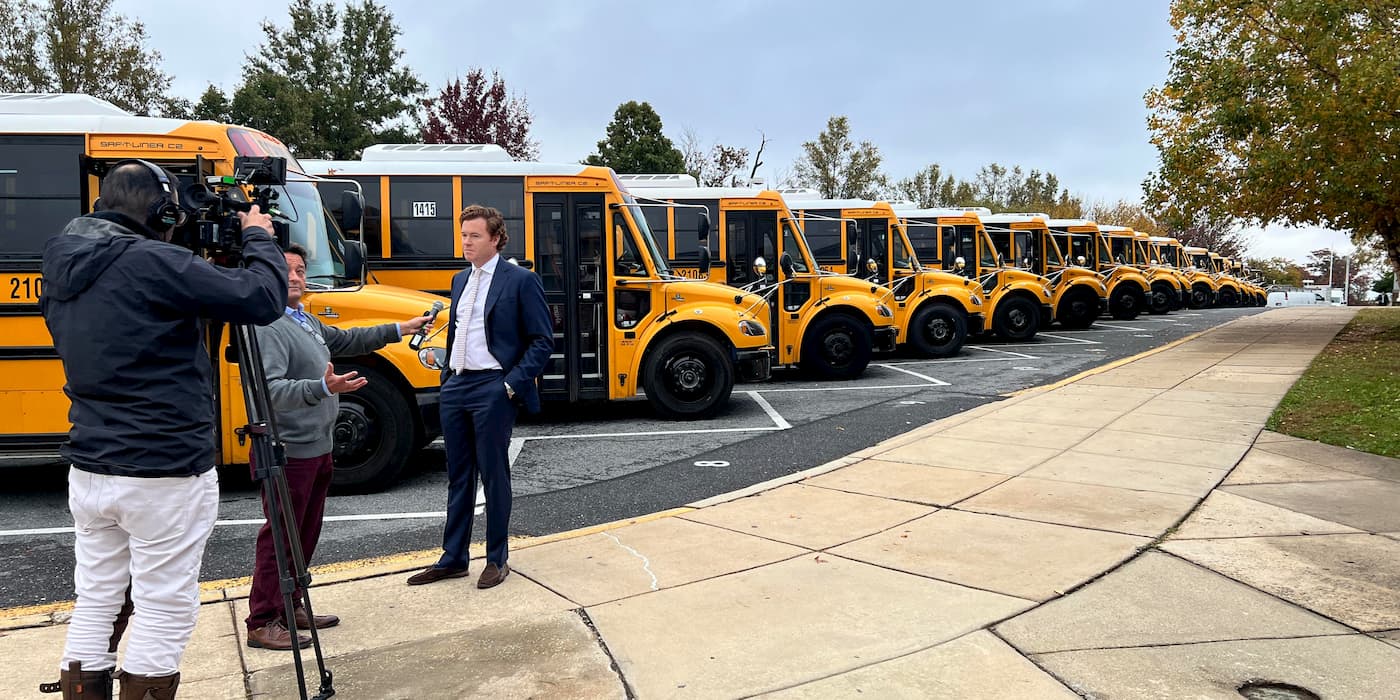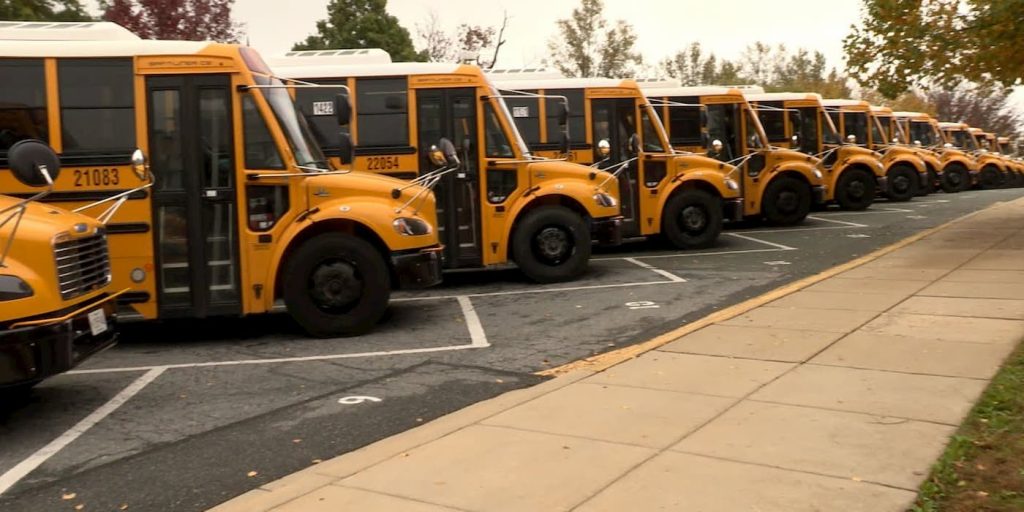
Those big yellow diesel school buses are a thing of the past as the US moves to zero-emission transportation. For those wondering how students and drivers are reacting to the transition, the Montgomery County Public School, which currently operates the largest electric school bus fleet in the US, gives us an inside look at how it’s going so far.
Montgomery County Public Schools (MCPS) is leading the charge for clean transportation to and from school, deploying the largest electric school bus fleet in the nation.
The school district expects to transition to a fully electric fleet within the next ten years as part of its pledge to reduce carbon emissions by 100% by 2035.
It received its first 25 electric school buses last year, installing the necessary infrastructure at one of its transportation depots. This year, MCPS added another 61, for a total of 86.
On a typical day, MCPS diesel buses use about 17,000 gallons of diesel fuel (nearly $80,000 at current prices). More importantly, they emit harmful emissions that can negatively impact student health and the communities they serve. A study from Columbia University found that switching just one diesel bus to an electric one can save about $150,000 in human health care costs per year.
As the school district rolls out its electric buses, they are finding not only do drivers love them but so do the students.

Drivers and students adjust to electric bus transition
Electric buses are an upgrade from their diesel-emitting counterparts in several ways other than just zero-emissions. For one, they are much calmer rides. Transportation director Greg Salois at MCPS tells Bethesda Magazine bus drivers are enjoying the new upgrades, saying:
Overall, they love it. There’s no noise.
Eric Melgar, a Rockville resident and bus driver for MCPS for a year and a half, says the electric buses are modern, eco-friendly, and more spacious than the outdated diesel models. He adds the students love the buses, too, and has noticed his students are quieter and better behaved.
They automatically fall in love with it. It’s a much smoother ride – you can tell the difference going over bumps and turns.
On a full charge, the electric buses – made by Thomas Built Buses – will go over 100 miles. They can also fit seven more passengers. According to depot manager Jim Beasly, the EV buses are longer by four feet.
Beasly adds loud diesel buses can be challenging to yell over, while the quieter environment promotes better student behavior. Bus drivers participate in several hours of training before getting behind the wheel.
Top comment by Paul L. Webster
Regenerative braking saves on brake repairs and adds a lot of miles for buses that are stopping often. When not in use (weekends, holidays, summer vacations) buses can be used to sell off peak power to local utilities. Buses are no longer needlessly idling in bus pick-up zones.
And one of the best parts, it comes at no additional cost to the school district.
MCPS is partnering with Highland Electric to upgrade 326 diesel buses to electric by 2025. Acting as a dealer, Highland buys the electric school buses from Thomas Built on MCPS’s behalf. Highland then charges MCPS the same price it would pay for diesel, absorbing the difference and collecting federal and state incentives to offset it.
Electric school buses save districts money over time with less maintenance and no fuel costs. Salois says the cost to drive an electric bus is around $2,600 for every 15,000 miles, while diesel costs around $9,000.
With 1,230 buses out daily, MCPS still needs to transition over 900 to fully electric over the next ten years. Learn more about how stackable electric school bus incentives make it nearly free for school districts to make the switch.
FTC: We use income earning auto affiliate links. More.



Comments